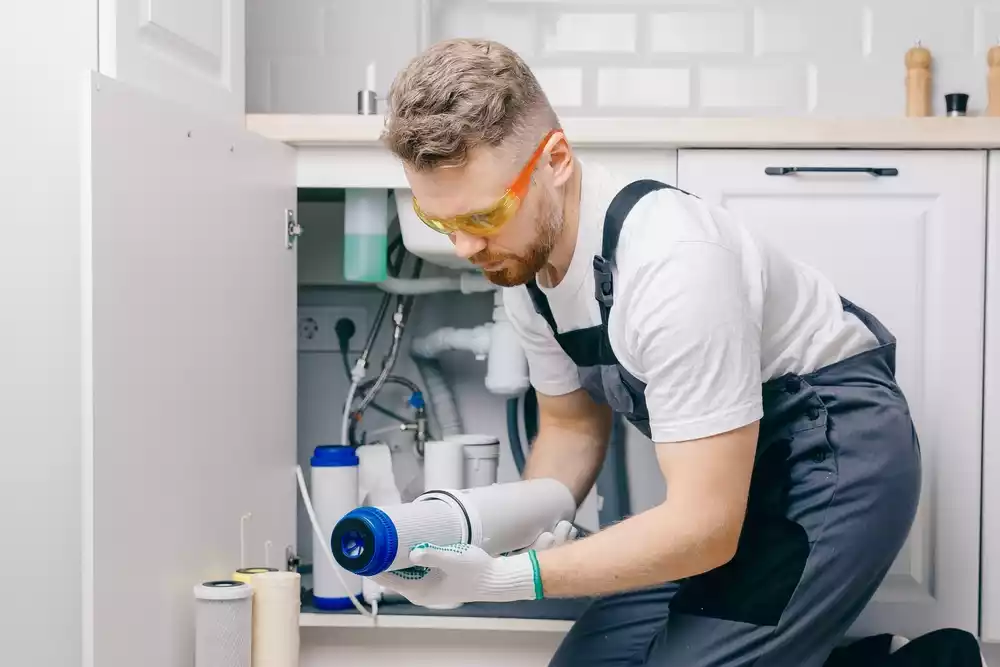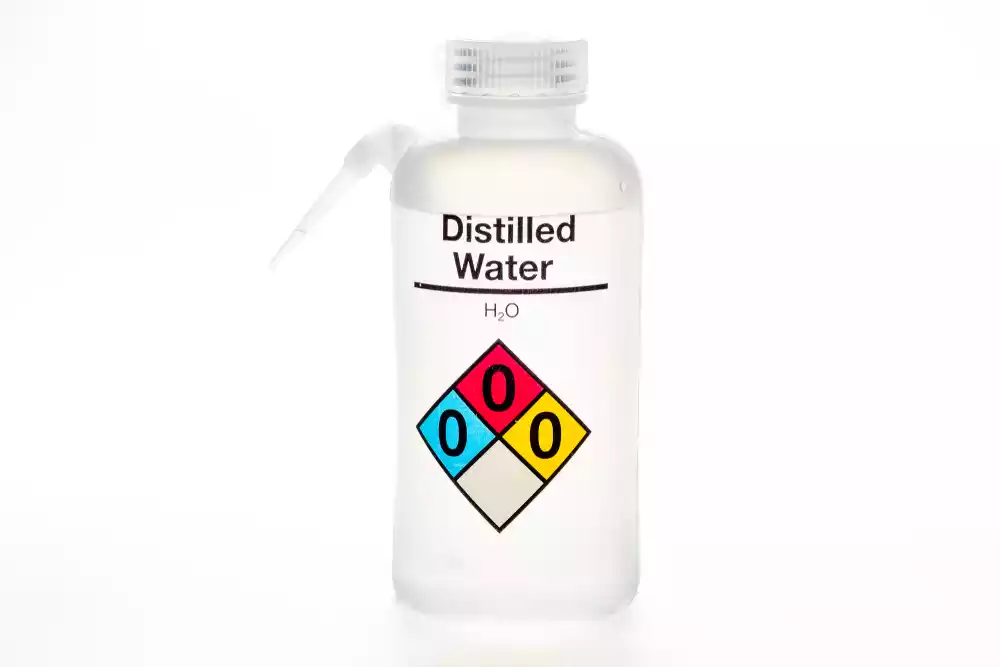Water is an essential component of our daily life, impacting both health and the quality of day-to-day tasks. Sodium in well water, while a natural occurrence, can be a concern when its concentration levels rise above the norm. Addressing this issue isn’t just about taste and aesthetics but a matter of health and wellness.
Well water, naturally sourced from underground aquifers, can carry dissolved minerals including sodium. Elevated sodium levels can impact heart health and heighten blood pressure concerns, making its removal paramount. While there are various methods to achieve sodium reduction, effectiveness varies based on specific household needs and the extent of sodium concentration.
Why Sodium in Well Water?
Well water originates deep within the earth, interacting with rock layers and natural minerals.
Natural Sources of Sodium
- Rock mineral dissolution
- Marine aerosols
- Atmospheric deposition
Human Interventions Increasing Sodium Levels
- Road salt runoff
- Agricultural chemicals
- Waste seepage

Health and Aesthetic Concerns
Sodium, while essential to the human body in moderate amounts, can pose risks when present in excessive quantities, especially in the water we consume daily.
Sodium’s Impact on Health
- High Blood Pressure Exacerbation: Excess sodium intake, especially through water, can lead to an imbalance in the body’s sodium-potassium ratio. This imbalance often results in hypertension, a condition where the force of the blood against the artery walls is too high.
- Cardiovascular Risks: Over time, consistent consumption of sodium-rich water can strain the heart and lead to various cardiovascular conditions, including heart disease.
- Kidney Strain: Our kidneys play a vital role in filtering out excess sodium. High sodium levels can overburden these organs, impairing their functionality and potentially leading to kidney disease.
- Osteoporosis Link: Some studies suggest that excessive sodium consumption can cause a calcium imbalance, increasing the risk of osteoporosis over time.
Aesthetic Concerns
Water’s taste, appearance, and even its feel can drastically change with increased sodium levels.
- Altered Taste: Sodium can give water a slightly bitter or metallic taste, making it less refreshing.
- Soap Ineffectiveness: Hard water, often accompanied by higher sodium levels, can reduce the lathering ability of soap, leading to ineffective cleaning and a filmy residue.
- Spotting on Utensils: Sodium-rich water can leave white spots or streaks on dishes and glasses, which might necessitate additional cleaning.
Testing Sodium Levels
To effectively combat sodium’s presence, frequent and accurate testing is paramount.
Importance of Regular Testing
- Early Detection: Catching elevated sodium levels early can help in implementing corrective measures promptly, potentially preventing health concerns.
- Health Preservation: With a consistent check on sodium levels, households can be assured of the quality of water they consume, aligning with health standards.
- Aesthetic Maintenance: Regular testing and subsequent treatment can prevent the aesthetic challenges sodium presents, ensuring clearer, tastier water and cleaner dishes.
Available Testing Methods
Different tools and methods can determine sodium levels in well water:
- Home Testing Kits: These are affordable and provide immediate results. They range from simple strip tests to more advanced electronic testers.
- Professional Lab Testing: For a detailed analysis, sending a water sample to a laboratory can provide accurate and comprehensive results.
- On-the-spot Digital Meters: Handheld digital meters provide quick and precise readings, ideal for those wanting regular checks without lab waiting times.

Method 1: Reverse Osmosis (RO)
RO is not just a method; it’s an advanced filtration process enhancing water quality on multiple fronts.
How RO Works
- Semi-permeable Membrane: This specialized layer allows only water molecules to pass through, effectively filtering out larger contaminants, including sodium.
- Pressure Application: Water is pushed through the membrane using pressure, ensuring efficient filtration.
- Waste Drainage: Impurities and contaminants, now separated, are flushed away, leaving only purified water.
Advantages of Using RO
- High Sodium Removal Rate: RO systems consistently showcase excellent sodium removal efficiencies, often upwards of 95%.
- Improved Taste: With impurities removed, the taste of water becomes noticeably better and more refreshing.
- Broad Spectrum Filtration: Beyond sodium, RO systems can filter out a variety of contaminants, enhancing overall water quality.
Points to Consider Before Installation
- Initial Cost: High-quality RO systems come with a higher initial investment.
- Maintenance Needs: Periodic replacement of the membrane and filters ensures optimal functioning.
- Waste Water Produced: A fraction of input water gets drained as waste, a point to consider especially in water-scarce regions.
Method 2: Distillation
Distillation stands as one of the oldest and most effective methods to purify water. By taking advantage of the differing boiling points of water and its contaminants, this method produces highly purified water.
The Distillation Process Explained
- Boiling: The initial step involves boiling the water. As water boils, it transforms into steam, leaving most contaminants, including sodium, behind.
- Steam Collection: The produced steam is directed into a cooling chamber.
- Condensation: In the cooling chamber, the steam condenses back into water.
- Collection: The condensed water, now largely free from contaminants, is collected in a separate reservoir.
Advantages of Distilled Water
- High Purity Level: Distillation efficiently removes not just sodium but also other contaminants like bacteria, viruses, and heavy metals.
- Consistent Taste: With impurities gone, distilled water offers a neutral taste.
- No Chemical Additives: The process doesn’t require chemical additives, ensuring the produced water remains clean.
Setup and Operational Costs
- Initial Setup: Home distillation units are available at varying costs, with basic models being affordable, but more advanced units can be pricier.
- Operational Costs: Distillation consumes energy, mainly for boiling. Depending on frequency and local electricity rates, this can influence monthly bills.
- Maintenance: Distillers generally have low maintenance, but they do require regular cleaning to remove mineral deposits.
Method 3: Ion Exchange Resins
Ion exchange resins are polymers capable of exchanging certain ions within the polymer with ions in a solution that’s passed through them—making them excellent for sodium removal.
Ion Exchange Process Breakdown
- Water Passage: Contaminated water is passed through a bed of the ion exchange resin.
- Ion Swapping: Sodium ions in the water are swapped for other ions, typically hydrogen or potassium.
- Flushed and Recharged: Over time, the resin saturates with undesired ions and needs regeneration, often with a salt solution.
Advantages of Ion Exchange
- Effectiveness: It’s highly effective against sodium and hardness-causing minerals.
- Improved Water Feel: Softened water feels silkier on the skin and is gentler on household appliances.
- No Energy Consumption: The system operates without electricity, offering operational savings.
Maintenance and Lifespan
- Regeneration Needs: Resins require periodic regeneration, a factor to consider in terms of both salt consumption and wastewater production.
- Lifespan: With proper care, ion exchange resins can last many years, offering long-term sodium solutions.
Comparing the Methods
Each method discussed possesses its unique advantages, operational costs, and levels of efficacy. Here’s a comparison:
Cost and Maintenance Comparison
- Distillation: Higher energy costs but lesser maintenance.
- RO: Moderate setup and maintenance costs; replacement parts might be pricier.
- Ion Exchange: Low energy costs, but expenses related to periodic resin regeneration.
Efficacy in Sodium Removal
- Distillation: Very high efficacy in removing sodium.
- RO: Consistently high sodium removal, often above 95%.
- Ion Exchange: Highly effective, especially with regular resin regeneration.
Suitability for Various Household Sizes
- Distillation: Best suited for smaller households due to limited production capacity.
- RO: Scalable, can cater to both small and large households.
- Ion Exchange: Ideal for large households, especially those facing hard water issues.
Tips for Maintaining Low Sodium Levels
Ensuring the continued low sodium level in your water goes beyond just installing a purification system.
Regular System Checks and Maintenance
- Routine Check-ups: Periodically inspect your systems to ensure they’re functioning optimally.
- Filter Replacement: Depending on the method, certain components, like filters or membranes, might require periodic replacement.
- Resin Regeneration: For ion exchange systems, regular regeneration is vital.
Awareness About Sodium Sources
- Dietary Sources: Stay informed about sodium levels in your diet, as water isn’t the only source.
- Natural Sodium: Some natural water sources might have elevated sodium levels; it’s essential to be aware if relying on well or spring water.
Frequently Asked Questions
How often should I test my well water for sodium?
Regular testing, ideally every 6-12 months, ensures sodium levels remain safe.
Can plants be affected by sodium-rich water?
Yes, high sodium levels can harm plants, affecting their growth and overall health.
Is boiling water enough to remove sodium?
No, boiling water only kills pathogens. Sodium remains in the water even after boiling.
Conclusion
Addressing sodium levels in well water goes beyond just ensuring palatable drinking water. It’s a proactive step towards safeguarding health. While the methods vary in their intricacy and cost, the emphasis remains on early detection, methodical approach, and consistent monitoring.
Choosing the most appropriate method depends on individual circumstances, but the ultimate goal remains clear: providing clean, safe water for daily consumption.
Hy guys I am looking for system to remove salt from my 28 foot deep water system located in the Philippines,
To remove salt from your 28-foot deep well water system in the Philippines, you have several effective options to consider. Here are the most reliable methods:
1. Reverse Osmosis (RO)
2. Distillation
3. Deionization
4. Ion Exchange etc